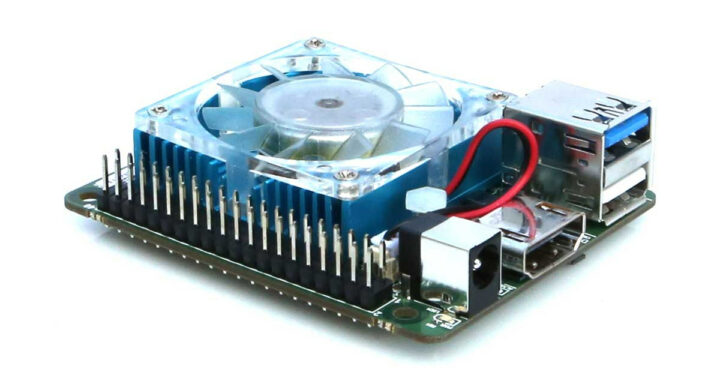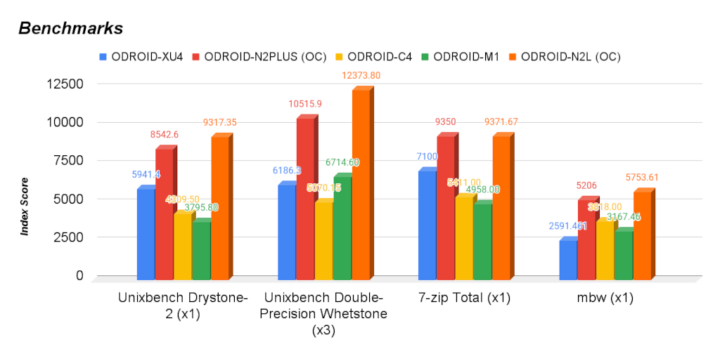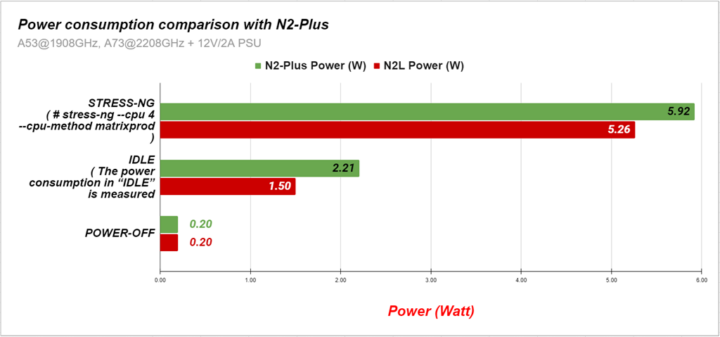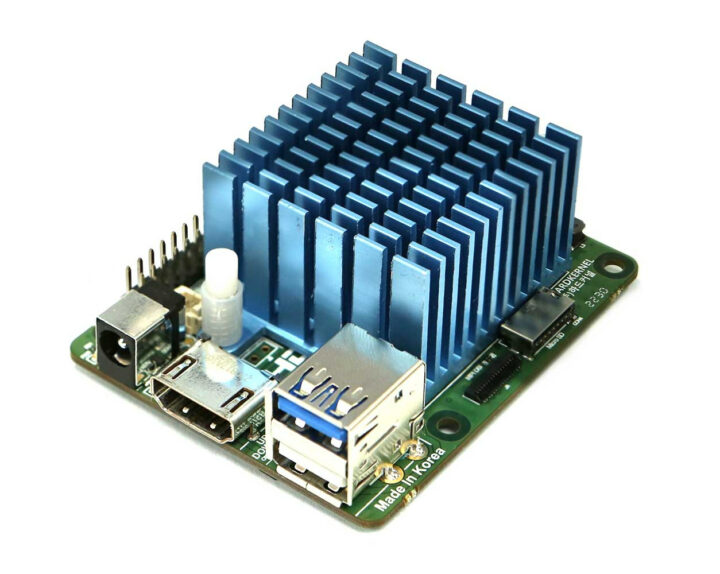ODROID-N2L SBC is a smaller and cheaper version of the ODROID-N2+ single board computer powered by an Amlogic S922X hexa-core Cortex-A73/A53 processor and offered with 2GB or 4GB single-chip LPDDR4X memory.
While the ODROID-N2+ is the most popular board from Hardkernel, it’s also fairly larger than most hobbyist SBCs on the market, and following requests from customers, the company designed the ODROID-N2L with a compact form factor that is smaller than Raspberry Pi Model B SBCs and sold at a lower price at the cost of missing some of the features of its big brother.
ODROID-N2L specifications:
- SoC – Amlogic S922X hexa-core big.LITTLE processor with 4x Arm Cortex A73 cores @ up to 2,208/2,400 MHz, 2x Arm Cortex A53 cores @ 1,908/2,016GHz, Arm Mali-G52 GPU @ 846MHz; 12nm manufacturing process
- System Memory – 2GB or 4GB LPDDR4 @ 3216 MT/s
- Storage – eMMC flash module socket up to 128GB, microSD card slot up to UHS-I SDR104
- Video & Audio Output
- HDMI 2.0 port up to 4K @ 60 Hz with HDR, CEC, EDID
- MIPI DSI connector (marked as “F” below and listed as TBD, so it’s unclear whether it works right now)
- Connectivity – Optional WiFi or Ethernet RJ45 adapter
- USB – 1x USB 3.0 host port, 1x USB 2.0 host port
- Expansions
- 40-pin GPIO header with 2x I2C, UART, SPI, 2x ADC, 25x GPIO, 5V, 3.3V, 1.8V, and GND signals
- Note: 3.3V I/Os, except for ADC @ 1.8V max
- Misc – 2x system LEDs, 2-pin header for optional fan
- Debugging – 4-pin UART white connector (H) for serial console
- Power Supply – 7.5V to 16V DC via 5.5/2.1mm power barrel jack
- Power consumption
- Power off: 0.2 Watt
- Idle: 1.5 Watt
- CPU stress (passive heatsink): 5.4W @ 2.208/1,908 MHz; 5.8W when overclocked to 2,400/2,016 MHz
- CPU stress (active cooling): 6.1W @ @ 2.208/1,908 MHz; 6.4W when overclocked
- Dimensions – 69 x 56mm; Thickness: 22mm with fan heatsink, 32mm with tall heatsink (ODROID-N2+: 100 x 91 x 18.75mm)
- Weight – 50 grams with fan heatsink; 68 grams with tall heatsink (ODROID-N2+ is 200 grams with its large heatsink)
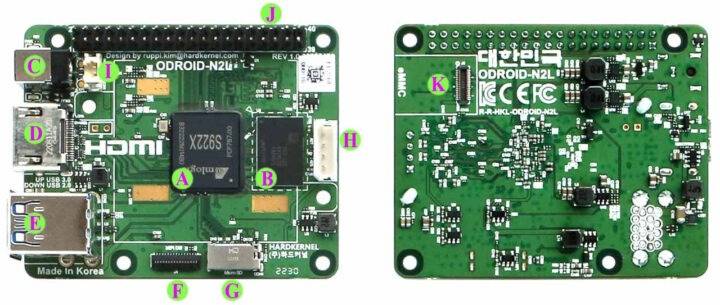
The biggest downside that I see is the complete lack of network connectivity as Ethernet, WiFi, or/and Bluetooth can only be added to the board through (USB) adapters. One of the tricks to make the board smaller was to replace the DDR4 RAM chips with a single LPDDR4 chip that also lowers power consumption and improves performance thanks to a 20% higher DRAM interface clock frequency. It shows in benchmarks as the ODROID-N2L is slightly faster than the ODROID-N2.
That’s around 10 to 20% faster system performance, and Hardkernel says graphics performance also improved by 10% in glmark2-es2 benchmark.
Power consumption is lower because of the LPDDR4X and the removal of some features.
Hardkernel provides Android 32-bit and 64-bit images as well as Ubuntu 22.04.01 minimal and MATE desktop images for the board. Note that images for the ODROID-N2+ will NOT boot on the ODROID-N2L because of the DRAM changes. Some work-in-progress documentation and the OS images can be found in the wiki.
ODROID-N2L SBC can be purchased for $59 with 2GB RAM and $69 with 4GB RAM. Those ship with a fan by default and the optional tall blue heatsink for fanless operation adds $4.90. You’ll find the boards and accessories on the Hardkernel store.

Jean-Luc started CNX Software in 2010 as a part-time endeavor, before quitting his job as a software engineering manager, and starting to write daily news, and reviews full time later in 2011.
Support CNX Software! Donate via cryptocurrencies, become a Patron on Patreon, or purchase goods on Amazon or Aliexpress


